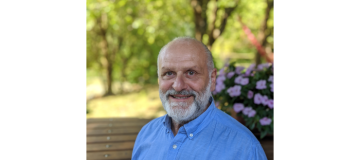
Prof. Umberto Castiello received an ERC Advanced Grant for a project on “Intentionality in Plants”. Congratulations!
“How” an action is performed is not solely determined by biomechanical constraints, but it depends on the agent’s intention, i.e., “why” the action is performed. For instance, in animal species kinematics for the very same action towards the very same object differ depending on whether it is performed with an individual or a social intent such as competing or cooperating. Recently we focused on the idea that even organism which are not equipped with a central nervous system can perform goal directed actions driven by some form of intentionality. We found that pea plant perceives a potential support in the environment, and they approach and grasp it by shaping the tendrils, their little hands, similarly to how a human would do when grasping an object. These results revert the general consensus that the movements of plants are only driven by cause-effect mechanisms and hard-wired reflexes and gives rise to a question that only a few years ago could be considered absurd: to what extent can a plant intentionally plan a movement? In this project (ROOMors) I shall provide an answer to this question by pioneering a new area of research attempting to render the intentions driving an action “visible” in the movement of plants. The project is driven by the hypotheses that plants show an intentional behaviour that parallels that exhibited by humans. ROOMors will characterize for the first time the concept of “intention in action” in plants by using sophisticated three-dimensional analysis of movement and genetics techniques to parallel plant and human biology for the identification of the mechanisms subtending the translation of intentions into actions. The results will corroborate the growing evidence of an evolutionary link among animals and plants. And they will demonstrate that despite plants and animals are two very unique evolutionary adaptations for multicellular life they have evolved signalling networks and mechanisms based on a common tool-set from our unicellular common ancestor.





